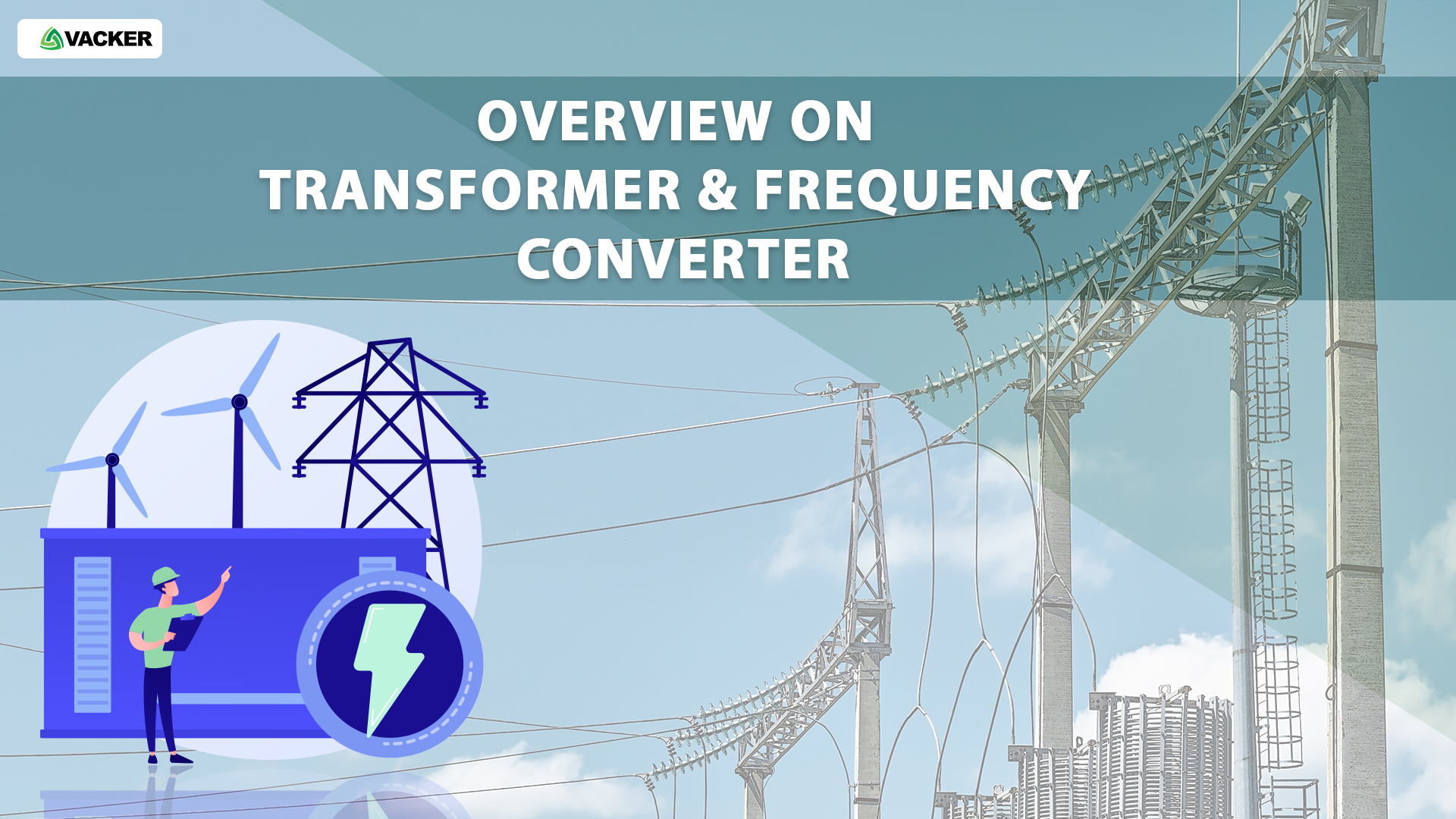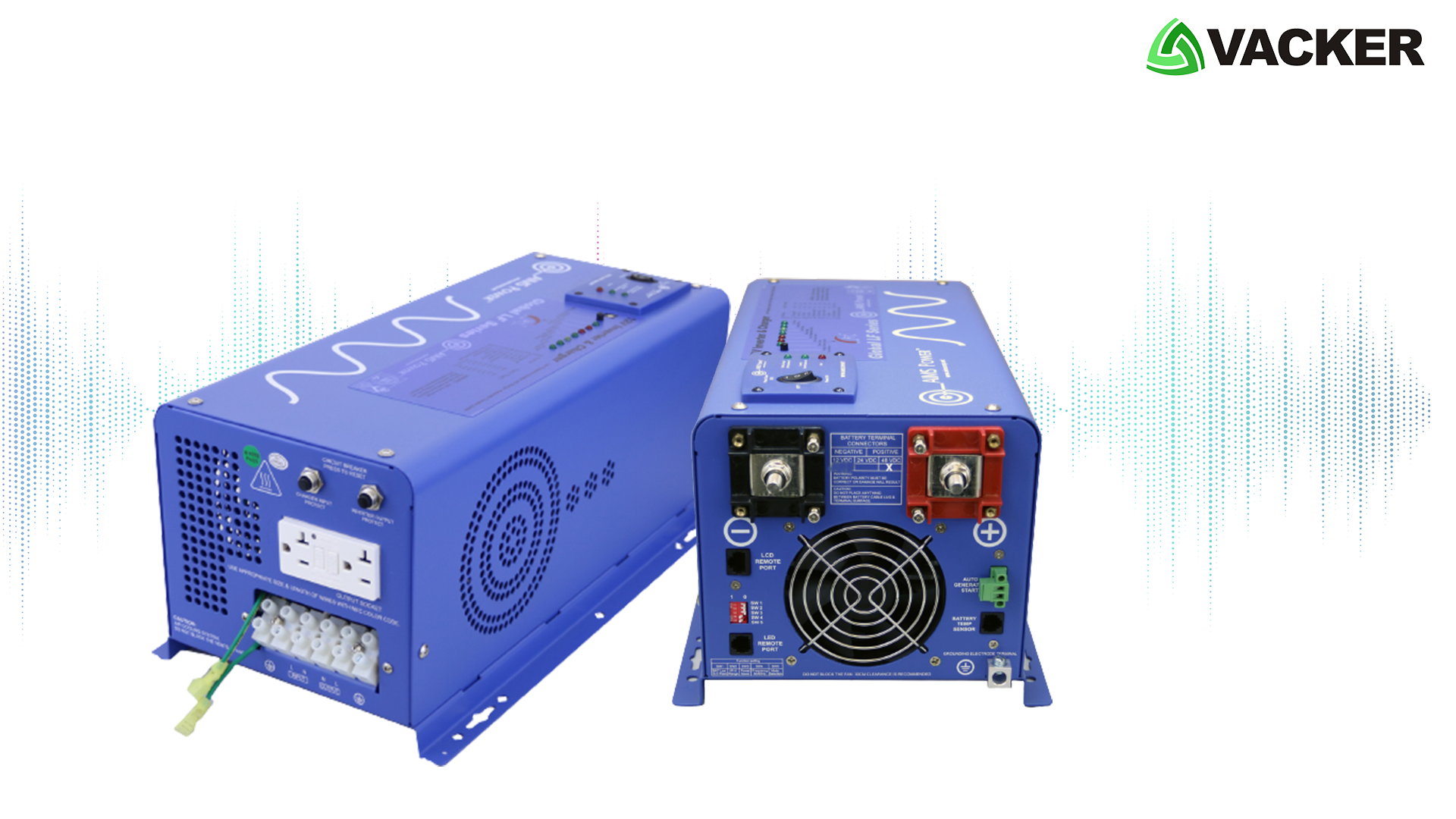Overview on Transformer and Frequency Converter

Today, we are giving you an overview of the Transformer and Frequency Converter.
If the topic interests you, stay till the end of the blog and have an insightful breakthrough.
When we first hear the term Frequency converter, a lot of questions such as:
What is a frequency converter?
How Does a Frequency converter work?
What is an electrical transformer?
What is the best way to convert 220 V to 400 V using a transformer?
What is the use of frequency converter? pops up in one fluid motion.
Doesn’t it? Let us tell you what it exactly is.
To quench your thirst for knowledge, keep reading!
What is a Frequency Converter?
A frequency converter, often known as a power frequency changer, converts 50 or 60 Hz input electricity into 400 Hz output power. There are various types of power frequency converters, including rotary frequency converters and solid-state frequency converters. Rotary frequency converters run a motor with electrical energy. Incoming alternating current (AC) is converted to direct current using solid-state frequency converters (DC). Frequency converters are designed to guarantee that key processes, such as cooling (radiators, pumps), fuel (boosters, heaters…), and ventilation, are accurately controlled (engine hall ventilation). The frequency converter is an energy saver as well as a noise limiter in many applications.
How does the converter work?
A two-stage conversion is used to modify the frequency of an AC frequency converter. It converts ac to dc first, then DC to AC at the required frequency. So a frequency converter has two sets of functions:
First, the rectifier circuit converts AC to DC, and then, using thermistors/IGCTs/IGBTs, the inverter circuit converts DC to AC at the specified frequency. The converter step is when the frequency is changed or shifted. A transformer will normally be included in either the ac input or output circuitry if voltage conversion is required, and this transformer may also provide galvanic isolation between the input and output AC circuits.
We may conclude that frequency converters are widely used power conversion devices in a variety of industries, and they offer several functions and advantages, including:
-
Improved Efficiency
Frequency converters allow you to run a motor or pump at its most efficient speed while also matching the motor to the amount of power needed. As a result, the engine will not overload, which will enhance overall efficiency and lower the cost of running the pump or motor in the long term.
-
Cost-efficient and prolonged service life
Frequency converters help your machines work better for longer by running them at a slower, more efficient pace, which reduces the need for maintenance and the costs associated with it. That isn’t to imply that regular maintenance isn’t necessary; you could just find that you don’t need as much of it. This more effective manner of running pumps and motors will allow equipment to last far longer than it would without one. Efficient speeds put less strain on the machine, making it last longer and reducing the number of repairs or replacements you have to do in the long term.
-
Improves working process
Frequency converters are used by many firms to optimize processes by allowing them to alter the speed of a machine. Because procedures are so important to a company’s or industry’s success, being able to improve your processes is one of the most significant long-term benefits you can get from frequency converters.
-
Saves energy
The application of water pump industries is the most obvious in terms of energy saving. The water pump’s power consumption is proportional to the cube of the rotation speed. When the external water consumption is low, frequency conversion can be employed to reduce the rotation speed, resulting in noticeable energy savings. The theory of energy conservation in other industries is likely the same, and it is accomplished by lowering the motor’s speed when it is not required to run at full speed.
-
Reduces mechanical wear and tear
When the motor or the linked mechanical part shaft or gear is started at the power frequency, it will cause intense vibration. Mechanical wear and tear will be aggravated by the vibration, which will shorten the life of mechanical components and motors. The frequency conversion speed regulation can govern the stop mode, and there are several options (deceleration stop, free stop, and deceleration stop + DC braking). It has the potential to lessen the impact on mechanical components and motors, making the entire system more reliable. In addition, it can extend the service life of the system and improve its stability.
-
Simplified controlling system
The frequency control can begin at zero speed and gradually increase in speed to meet the needs of the consumers. Furthermore, the acceleration curve can be chosen (linear acceleration, S-shaped acceleration, or automatic acceleration). The operating speed can be altered fast based on the process and can be adjusted based on the needs at any moment. The speed can also be adjusted using a remote control PLC or other controllers.
Now let us take you to the next part of the blog,
What is an electrical transformer?
The machine that modifies the voltage level but not the frequency of electricity being from one circuit to another are electrical transformers. They are now intended to run on an AC supply, which means that supply voltage fluctuation is influenced by current fluctuation. As a result, the increase in current causes an increase in voltage, and the increase in voltage causes an increase in current. The transformers help to improve the efficiency and safety of electrical systems by raising and reducing voltage levels as needed. They’re employed in a variety of domestic and industrial settings, but perhaps most notably in the distribution and regulation of power over large distances.
Furthermore, the electrical transformer is comprised of three main components; a magnetic core, a primary winding, and a secondary winding. The primary winding is the part of the magnetic flux generator that is coupled to an electrical source, while the main flux is induced in the primary winding, which is then transmitted to the magnetic core and coupled to the transformer’s secondary winding through a low resistance channel. To increase flux coupling, a low-reluctance route is introduced into the core, and the core relays the flux to the secondary winding, forming a magnetic circuit that shuts the flux.
The secondary winding helps complete the flux movement that starts on the primary site and proceeds through the core to the secondary winding. Due to the fact that both windings are coiled around the same core, their magnetic fields help to create motion, the secondary winding can build up momentum. In all types of transformers, the magnetic core is constructed by stacking laminated steel sheets, starting with the smallest, to guarantee that the magnetic path is maintained.
Thus, finishing the construction of an electrical transformer.
Now, We know that you have been wondering how this works. Let us walk you through it!
“The rate of change of flux linkage with respect to time is directly proportional to the induced EMF in a conductor or coil,” according to Faraday’s electromagnetic induction law. Mutual induction between two circuits connected by a shared magnetic field is the physical basis of a transformer. It typically has two windings: primary and secondary. A laminated magnetic core connects these windings, and mutual induction between them aids in the transmission of electricity from one location to another. The rate of change in flux linkage will vary depending on the quality of connected flux between the primary and secondary windings. A low-reluctance path is introduced between the two windings to achieve maximum flux linkage, that is, maximum flux passing through and linking to the secondary winding from the main winding. This improves the efficiency of operating performance and forms the transformer’s core.
An alternating flux is now formed in the core when an alternating voltage is applied to the primary side windings. This connects the primary and secondary windings to produce EMF on both sides. When a load is connected to the secondary section, the EMF in the secondary winding generates a current called load current. To transport AC power from one circuit (primary) to another, electrical transformers convert electrical energy from one value to another, changing the voltage level but not the frequency (secondary).
Pumping stations, railways, industries, commercial enterprises, windmills, and power generation units are just a few of the numerous uses for an electrical transformer. Some other uses of the transformer are listed below:
- For Increasing or decreasing the voltage level in an AC circuit.
- Similarly, Increasing or reducing the value of an inductor or capacitor.
- Preventing DC from flowing from one circuit to the next.
- Isolating the two electric circuits.
- Increasing the voltage level at the power production site before transmission and distribution begins.
What is the best way to convert 220 V to 400 V using a transformer?
The transformer operates on the mutual induction concept. Primary and secondary windings are the two types of windings. The primary winding produces 220 V, while the secondary produces 400 V. The output is now determined by the number of turns in the windings. The number of turns in the secondary winding of a step-up transformer is more than the number of turns in the primary winding, resulting in an increase in output voltage. You can get the voltages you need simply by adjusting the number of turns in the windings.
With that being said,
VackerGlobal provides a broad spectrum of products, all equipped with the most modern state of art and technology.
Following are the list of products that VackerGlobal offers;
- Isolation Transformers
– Power Transformers
– Distribution Transformers
– Control Transformers - Auto Transformers
- Power Tool Safety Transformers
- Motor Starting Auto Transformers
- Automatic Voltage Stabilizers
- Cast Resin Transformers
- 400Hz Transformers
- Custom Design Transformers
- Primary Injection Kit
- Frequency Converter
- Corona Treater Unit
Leave a Reply